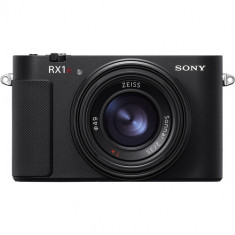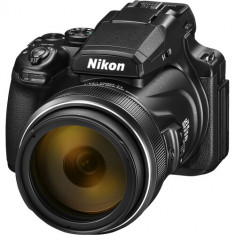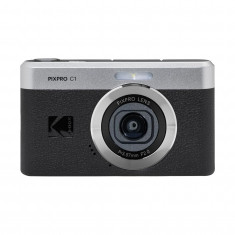Point & Shoot
- 14 itemsFilters
Categories
Brand
-
2
-
5
-
2
-
5
Availability
-
9
-
12
-
14
Monitor Size
-
1
-
3
Recording Modes
-
5
-
3
Sony Cyber-shot DSC-RX100 VII Digital Camera
SKU #000570 Model MFR #DSC-RX100M7 UPC #027242918511Key Features
- 20.1MP 1" Exmor RS BSI CMOS Sensor
- BIONZ X Image Processor & Front-End LSI
- 24-200mm (35mm Equivalent)
- ZEISS Vario-Sonnar T* f/2.8-4.5 Lens
Canon PowerShot SX740 HS Digital Camera
SKU #101472 Model 2955C001Key Features
- 20.3MP CMOS Sensor
- DIGIC 8 Image Processor
- 40x Optical Zoom with OIS
- 24-960mm (35mm Equivalent)
Nikon COOLPIX P950 Digital Camera
SKU #101036 Model 26532 UPC #018208265329Key Features
- 16MP 1/2.3" BSI CMOS Sensor
- NIKKOR 83x Optical Zoom Lens
- 24-2000mm (35mm Equivalent)
- UHD 4K30 and Full HD 60p Video
Sony RX1R III Digital Camera
SKU #000983 Model DSCRX1RM3BKey Features
- 61MP Full-Frame Exmor R BSI Sensor
- ZEISS Sonnar T* 35mm f/2 Lens
- BIONZ XR & AI Processing Unit
- 693-Point PDAF & Real-Time Tracking AF
Nikon COOLPIX P1100 Digital Camera
SKU #110549 Model 26541Key Features
- 16MP BSI CMOS Sensor
- NIKKOR 24-3000mm Lens (35mm Equivalent)
- EXPEED Image Processor
- Aperture Range: f/2.8-8
Kodak PIXPRO C1 Compact Digital Camera (Black)
SKU #110550 Model C1-BKKey Features
- 26mm f/2 Wide-Angle Lens
- 13MP 1/3" BSI CMOS Sensor
- 2.8" 180° Tilting LCD Selfie Screen
- Fixed Lens, 4x Digital Zoom
Kodak PIXPRO C1 Compact Digital Camera (Brown)
SKU #110551 Model C1-BNKey Features
- 26mm f/2 Wide-Angle Lens
- 13MP 1/3" BSI CMOS Sensor
- 2.8" 180° Tilting LCD Selfie Screen
- Fixed Lens, 4x Digital Zoom
Sony Cyber-shot DSC-RX10 IV Digital Camera
SKU #000161 Model DSCRX10M4/B UPC #027242909595Key Features
- 20.1MP 1" Exmor RS BSI CMOS Sensor
- BIONZ X Image Processor & Front-End LSI
- 24-600mm (35mm Equivalent)
- Zeiss Vario-Sonnar T* f/2.4-4 Zoom Lens
Sony ZV-1 II Digital Camera
SKU #000858 Model ZV1M2/BKey Features
- For Vloggers and Content Creators
- 20.1MP 1" Exmor RS BSI CMOS Sensor
- UHD 4K30p Video w/ HLG & S-Log3/2 Gammas
- Wide-Angle 18-50mm-Equiv. f/1.8-4 Lens
Sony ZV-1F Vlogging Camera (Black)
SKU #000871 Model ZV1F/BKey Features
- 20.1MP 1" Exmor RS BSI CMOS Sensor
- BIONZ X Image Processor
- ZEISS 20mm-Equivalent f/2-f/8 Lens
- UHD 4K30p Video Recording
Point & Shoot
Point-and-shoot cameras are distinguished from single-lens reflex cameras (SLRs) in several respects: point-and-shoot film cameras, and many digital ones, use a viewfinder. The image that the photographer sees is not the same image that passes through the primary lens of the camera. Rather, the image in the viewfinder passes through a separate lens.[4] SLRs, on the other hand, have only one lens, and a mirror diverts the image from the lens into the viewfinder; that mirror then retracts when the picture is taken so that the image can be recorded on the film or sensor. With this mechanism, pictures cannot be previewed on the LCD screens of most digital SLRs (DSLR). Some manufacturers have found a way around this limitation, often by splitting the image into two just before reaching the viewfinder eyepiece. One image goes into the viewfinder and the other goes into a low resolution image sensor to allow light metering or previewing on the LCD, or both.
Digital cameras share one advantage of the SLR design, as the camera's display image comes through the lens, not a separate viewfinder. Mirrorless Interchangeable Lens Cameras (MILC Cameras) lack a mirror but in many ways can be used the same as DSLRs. Many smaller digital point-and-shoots of the 2010s omit the viewfinder and use only the screen.
With SLR cameras, it is important that the image in the viewfinder be the same image recorded by the film or sensor, so that the effect of the add-on lenses and filters can be seen by the photographer. Point-and-shoot cameras generally don't have such add-on devices, hence no need.
Small cameras, including digital ones, encourage the occurrence of photographic orbs — unexpected, typically circular artifacts that occur in flash photography — where the short distance between the lens and the built-in flash decreases the angle of light reflection to the lens. The resulting retroreflection makes dust particles bright and visible.











